Enhance database caching with advanced configuration in W3 Total Cache
Sep 04, 2023 am 11:09 AMSo far, we have configured the W3 Total Cache Minification settings. In this tutorial, I will cover the advanced configuration of W3 Total Cache.
Database Cache
Database caching is an important factor in optimizing your website. Let me give you an example of a three-tier network: Now, applications are being deployed in multiple tiers to improve performance. This means that the application layer and data layer can exist on different hosts. The application displays the data as needed.
Here, the bottleneck is the data layer. A bottleneck is defined as the point at which the overall system's performance or capacity is limited by a number of components or resources. In our case this will be the data layer.
In order to improve performance, obviously we need the data to be right where the application layer is, but commercial databases are heavy enough to not be placed in the application layer, so we use other lightweight databases to cache the data layer host in the application.
To clarify the above description, think of it this way: A simple way to understand this type of caching is to think about dynamically serving pages in your WordPress website by querying the database again and again. The role of the database cache is to cache the most commonly used queries so that more static content can be retrieved quickly.
Advantages of database caching
- Scalability
- flexibility
- Availability
- performance
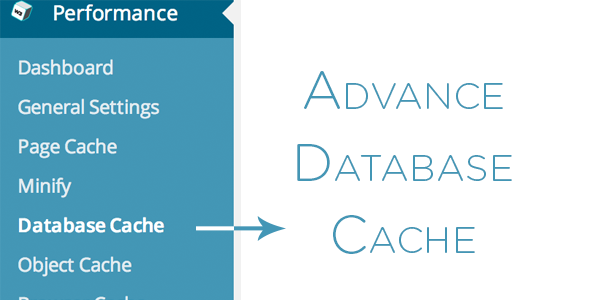
conventional
Let's start configuring the database cache. First, pay attention to the General tab. Check the option that tells the plug-in not to cache queries for logged in users. For example, if you are using WordPress as your CMS and selling paid content, then all the traffic you have is a set of logged in users, then you can uncheck this option.
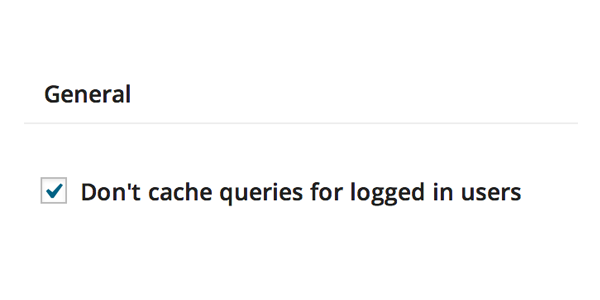
advanced
Maximum lifetime of cached objects
In the advanced settings, the first configuration is set to a value of 180 seconds. It determines the expiration time of unchanged cache items. The higher the value, the larger the cache. You can increase this value if you want to cache database queries for a longer period of time. It will significantly increase the cache size on disk.
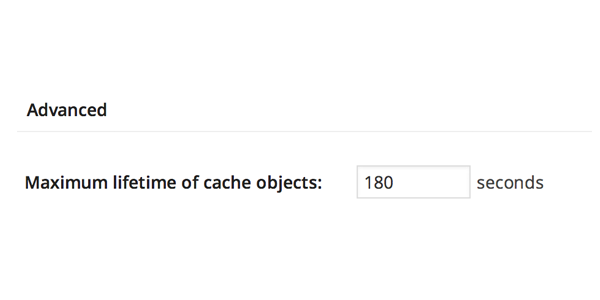
Garbage collection interval
This setting defines how often you want the junk cache to be removed from disk. In the previous tutorial, we selected "Disk type cache", which is responsible for saving the cache on the host's disk storage. The garbage collection interval setting is responsible for removing wasteful cache. The default value of 3600 is fine in most cases.

Do not cache the following pages
Pages/URLs or directories defined in this box will not be cached. This setting helps us when we have problems dealing with a specific page or directory related to the plugin.
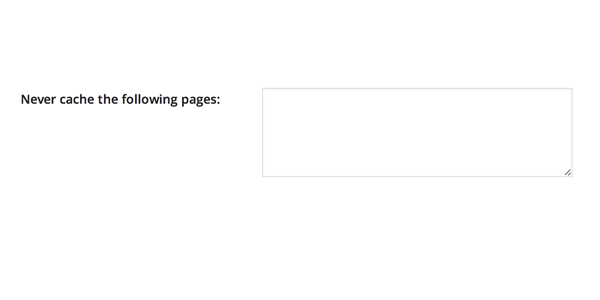
Ignored query stem
Sometimes plugins like WooCommerce and other rating plugins suffer from database caching. We tend to ignore database queries related to these plugins through this area. WooCommerce and other most commonly used plugins have been addressed. That said, you can see some default values ??that have been set.
For example, I had a problem with the ratings plugin, so I consulted Lester (the author of this plugin) and he told me to ignore the two stems wp_postmeta and wp_ in W3TC ratings. This example is just to give you an idea of ??how to solve the problem.
Please note that any prefix entered (set in wp-config.php) will be replaced with the current database prefix (default: wp_). You can use debug mode to identify query stems. If you still face any problem, you can read this solution.

Reject query words
Leave this setting unless you are a database administrator and know what you are doing. This area is used to ignore certain patterns of database queries that are too important to be used directly instead of cached.
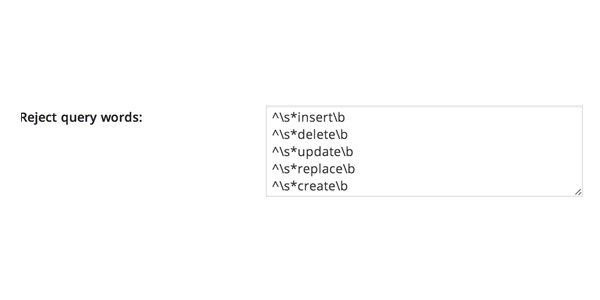
That's it. We'll cover object caching in the next tutorial. If you have any questions, I'd be happy to help.
The above is the detailed content of Enhance database caching with advanced configuration in W3 Total Cache. For more information, please follow other related articles on the PHP Chinese website!

Hot AI Tools

Undress AI Tool
Undress images for free

Undresser.AI Undress
AI-powered app for creating realistic nude photos

AI Clothes Remover
Online AI tool for removing clothes from photos.

Clothoff.io
AI clothes remover

Video Face Swap
Swap faces in any video effortlessly with our completely free AI face swap tool!

Hot Article

Hot Tools

Notepad++7.3.1
Easy-to-use and free code editor

SublimeText3 Chinese version
Chinese version, very easy to use

Zend Studio 13.0.1
Powerful PHP integrated development environment

Dreamweaver CS6
Visual web development tools

SublimeText3 Mac version
God-level code editing software (SublimeText3)

Hot Topics
 How to diagnose high CPU usage caused by WordPress
Jul 06, 2025 am 12:08 AM
How to diagnose high CPU usage caused by WordPress
Jul 06, 2025 am 12:08 AM
The main reasons why WordPress causes the surge in server CPU usage include plug-in problems, inefficient database query, poor quality of theme code, or surge in traffic. 1. First, confirm whether it is a high load caused by WordPress through top, htop or control panel tools; 2. Enter troubleshooting mode to gradually enable plug-ins to troubleshoot performance bottlenecks, use QueryMonitor to analyze the plug-in execution and delete or replace inefficient plug-ins; 3. Install cache plug-ins, clean up redundant data, analyze slow query logs to optimize the database; 4. Check whether the topic has problems such as overloading content, complex queries, or lack of caching mechanisms. It is recommended to use standard topic tests to compare and optimize the code logic. Follow the above steps to check and solve the location and solve the problem one by one.
 How to minify JavaScript files in WordPress
Jul 07, 2025 am 01:11 AM
How to minify JavaScript files in WordPress
Jul 07, 2025 am 01:11 AM
Miniving JavaScript files can improve WordPress website loading speed by removing blanks, comments, and useless code. 1. Use cache plug-ins that support merge compression, such as W3TotalCache, enable and select compression mode in the "Minify" option; 2. Use a dedicated compression plug-in such as FastVelocityMinify to provide more granular control; 3. Manually compress JS files and upload them through FTP, suitable for users familiar with development tools. Note that some themes or plug-in scripts may conflict with the compression function, and you need to thoroughly test the website functions after activation.
 How to optimize WordPress without plugins
Jul 05, 2025 am 12:01 AM
How to optimize WordPress without plugins
Jul 05, 2025 am 12:01 AM
Methods to optimize WordPress sites that do not rely on plug-ins include: 1. Use lightweight themes, such as Astra or GeneratePress, to avoid pile-up themes; 2. Manually compress and merge CSS and JS files to reduce HTTP requests; 3. Optimize images before uploading, use WebP format and control file size; 4. Configure.htaccess to enable browser cache, and connect to CDN to improve static resource loading speed; 5. Limit article revisions and regularly clean database redundant data.
 How to use the Transients API for caching
Jul 05, 2025 am 12:05 AM
How to use the Transients API for caching
Jul 05, 2025 am 12:05 AM
TransientsAPI is a built-in tool in WordPress for temporarily storing automatic expiration data. Its core functions are set_transient, get_transient and delete_transient. Compared with OptionsAPI, transients supports setting time of survival (TTL), which is suitable for scenarios such as cache API request results and complex computing data. When using it, you need to pay attention to the uniqueness of key naming and namespace, cache "lazy deletion" mechanism, and the issue that may not last in the object cache environment. Typical application scenarios include reducing external request frequency, controlling code execution rhythm, and improving page loading performance.
 How to prevent comment spam programmatically
Jul 08, 2025 am 12:04 AM
How to prevent comment spam programmatically
Jul 08, 2025 am 12:04 AM
The most effective way to prevent comment spam is to automatically identify and intercept it through programmatic means. 1. Use verification code mechanisms (such as Googler CAPTCHA or hCaptcha) to effectively distinguish between humans and robots, especially suitable for public websites; 2. Set hidden fields (Honeypot technology), and use robots to automatically fill in features to identify spam comments without affecting user experience; 3. Check the blacklist of comment content keywords, filter spam information through sensitive word matching, and pay attention to avoid misjudgment; 4. Judge the frequency and source IP of comments, limit the number of submissions per unit time and establish a blacklist; 5. Use third-party anti-spam services (such as Akismet, Cloudflare) to improve identification accuracy. Can be based on the website
 How to use the Plugin Check plugin
Jul 04, 2025 am 01:02 AM
How to use the Plugin Check plugin
Jul 04, 2025 am 01:02 AM
PluginCheck is a tool that helps WordPress users quickly check plug-in compatibility and performance. It is mainly used to identify whether the currently installed plug-in has problems such as incompatible with the latest version of WordPress, security vulnerabilities, etc. 1. How to start the check? After installation and activation, click the "RunaScan" button in the background to automatically scan all plug-ins; 2. The report contains the plug-in name, detection type, problem description and solution suggestions, which facilitates priority handling of serious problems; 3. It is recommended to run inspections before updating WordPress, when website abnormalities are abnormal, or regularly run to discover hidden dangers in advance and avoid major problems in the future.
 How to enqueue assets for a Gutenberg block
Jul 09, 2025 am 12:14 AM
How to enqueue assets for a Gutenberg block
Jul 09, 2025 am 12:14 AM
When developing Gutenberg blocks, the correct method of enqueue assets includes: 1. Use register_block_type to specify the paths of editor_script, editor_style and style; 2. Register resources through wp_register_script and wp_register_style in functions.php or plug-in, and set the correct dependencies and versions; 3. Configure the build tool to output the appropriate module format and ensure that the path is consistent; 4. Control the loading logic of the front-end style through add_theme_support or enqueue_block_assets to ensure that the loading logic of the front-end style is ensured.
 How to add custom fields to users
Jul 06, 2025 am 12:18 AM
How to add custom fields to users
Jul 06, 2025 am 12:18 AM
To add custom user fields, you need to select the extension method according to the platform and pay attention to data verification and permission control. Common practices include: 1. Use additional tables or key-value pairs of the database to store information; 2. Add input boxes to the front end and integrate with the back end; 3. Constrain format checks and access permissions for sensitive data; 4. Update interfaces and templates to support new field display and editing, while taking into account mobile adaptation and user experience.






